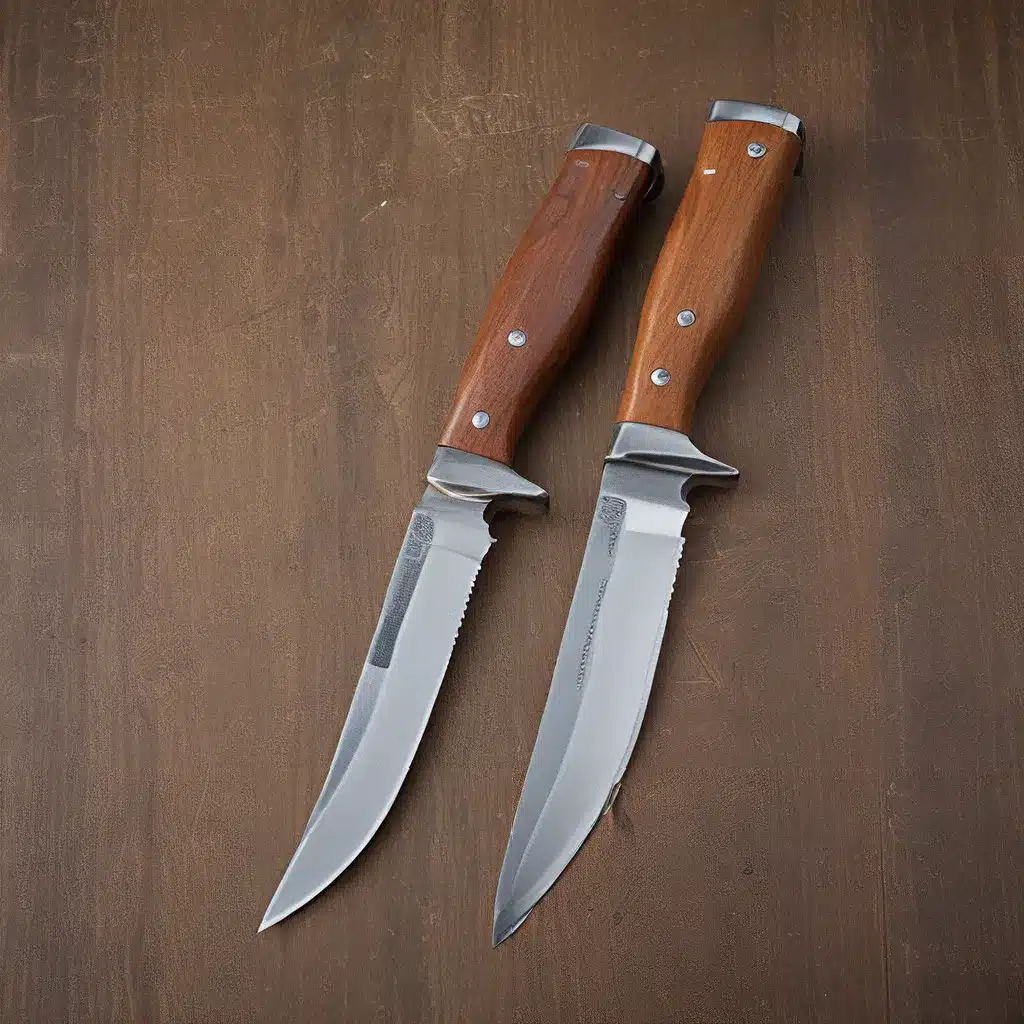
The Shifting Tides of Knife Legislation
As a self-professed knife enthusiast, I’ve always been fascinated by the complex and ever-changing landscape of knife laws. It’s a topic that, quite frankly, can be as sharp and nuanced as the blades themselves. Let me take you on a journey through the winding path of knife legislation, where the line between freedom and safety often teeters on a knife’s edge.
You see, the world of knives is a bit like a dance – a delicate balance between the right to bear arms and the need for public safety. It’s a dance that’s constantly evolving, with lawmakers and knife aficionados alike trying to keep up with the changing steps. And let me tell you, it’s not always a graceful waltz.
Back in the day, knives were often seen as just another tool in the everyday toolbox. Heck, I can remember my grandpa carrying a trusty pocket knife with him wherever he went, and no one batted an eye. But as times changed, so too did the perception of these humble implements.
The Rise of Knife Control
The 1950s and 60s saw a surge in concerns about knife-related violence, particularly in urban areas. Suddenly, these everyday tools were being painted as the weapons of choice for gangs and troublemakers. Politicians, eager to appear tough on crime, started to crack down on knife ownership, and before you knew it, a patchwork of knife laws started to emerge across the country.
Some experts argue that this knee-jerk reaction was fueled by a cultural prejudice against the color black, with the dark finish of certain knives being seen as a symbol of “shame and dishonor.” It’s a fascinating (and somewhat unsettling) idea that suggests our perceptions of these tools are often shaped by factors beyond just their practical use.
But the dance didn’t stop there. As the years passed, the laws governing knives became increasingly complex and convoluted. What was legal in one state might be a felony in the next, and it seemed like every city had its own unique set of regulations.
The Push for Uniformity
Knife enthusiasts, understandably, grew frustrated with this patchwork of laws. They wanted clarity, consistency, and the freedom to pursue their passion without the fear of running afoul of arcane regulations. And so, a movement began to emerge, advocating for a more uniform approach to knife legislation.
Some experts point to the rise of the Knife Rights organization as a key player in this push for change. This grassroots group has worked tirelessly to challenge restrictive knife laws, lobbying for legislation that would establish a more consistent and reasonable approach to knife ownership and carry.
And you know what? They’ve had some success. Over the past decade or so, we’ve seen a number of states adopt “knife preemption” laws, which essentially prohibit local municipalities from enacting their own knife regulations. This has helped to create a more streamlined and predictable legal landscape for knife enthusiasts.
The Ongoing Debate
But of course, the dance continues. There are still those who argue that stricter knife laws are necessary to protect public safety, particularly in the wake of high-profile incidents involving knife-related violence. And the debate rages on, with both sides presenting compelling arguments and statistics to support their positions.
Personally, I tend to side with the knife enthusiasts on this one. I believe that responsible knife ownership and use is a fundamental right, and that the vast majority of knife owners are law-abiding citizens who pose no threat to public safety. But I also recognize the valid concerns of those who worry about the potential for harm.
It’s a complex issue, and one that I don’t think has a simple solution. As with so many things in life, it’s about finding the right balance – respecting individual freedoms while also ensuring the safety of our communities.
The Future of Knife Laws
So where do we go from here? It’s hard to say for sure, but I suspect that the evolution of knife laws will continue to be a hotly debated topic in the years to come. Maybe we’ll see more states adopt preemption laws, or perhaps there will be a push for federal legislation to create a more consistent national framework.
Or maybe, just maybe, we’ll see a shift in the cultural perception of knives – a move away from the “weapon of choice” mentality and towards a greater appreciation for these tools as instruments of utility, craftsmanship, and personal expression.
One thing’s for sure: the dance will go on. And as a knife enthusiast, I’ll be watching every step, hoping that we can find a way to celebrate the beauty and utility of these remarkable implements while also ensuring the safety of our communities.
After all, isn’t that what it’s all about? Finding that elusive balance, where our freedoms and our responsibilities coexist in perfect harmony, like the gleaming edge of a finely-crafted blade.


